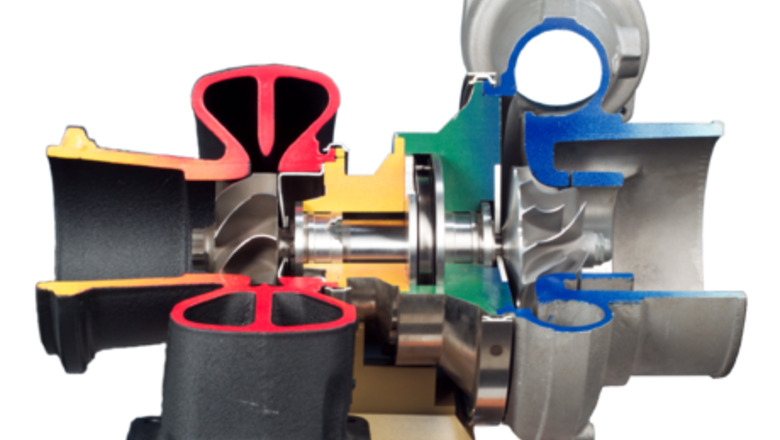
views
Turbochargers are very effective for making engines more powerful and are an alternative to swapping a smaller displacement for a larger one for the sake of power gains. For cars that are turbocharged from the factory, swapping in a larger turbocharger is one of the most cost effective ways to gain more power.
Installing a New/Different Turbo on a Factory Turbocharged Vehicle
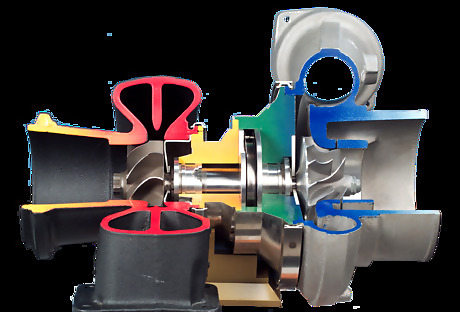
Research your vehicle. Read forums to help decide which turbocharger will best suit your needs and power goals. Research what supporting modifications, if any, will be necessary to maintain your vehicle's reliability with your new turbocharger.
Purchase your supplies. You'll need a new turbocharger, new gaskets, and any necessary supporting parts for the installation.
Spray the nuts and studs, or bolts on your exhaust manifold with penetrating lubricant.
Disconnect the negative battery cable.
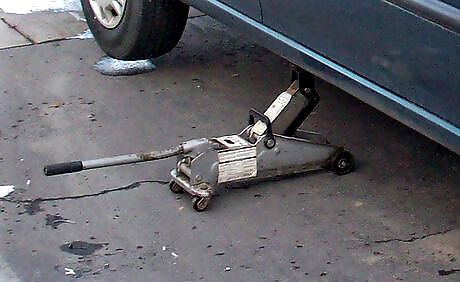
Use a floor jack in order to raise your vehicle off of the ground. This will make sure you are able to work underneath the front of the car, but make sure that you are able to comfortably reach the exhaust manifold and turbocharger from the top of the engine bay. Once you find the correct height, place jack stands under the car and remove the jack.
Locate the downpipe (the exhaust pipe connecting your turbo and the rest of the exhaust). Remove the bolts that are holding the turbo and the downpipe together.
Loosen the clamp or bolts holding the intake piping to the turbocharger. Remove the piping.
Loosen the clamp or bolts holding the intercooler piping to the turbo. Remove the piping.
Locate any and all coolant or oil lines that are connected to the turbo. Disconnect them.
Clamp or plug the coolant and/or oil lines in order to keep them from leaking fluid and creating a mess.
Disconnect the vacuum line connected to the wastegate.
Loosen all of the exhaust manifold nuts or bolts. Do not fully remove them until you are prepared to support the weight of the turbo charger and manifold.
Lift or lower the turbo and manifold slowly and carefully. Depending on the vehicle, it may be easier to remove the turbo and manifold through the top of the engine bay, or through the bottom.
Remove the fasteners holding the turbo to the exhaust manifold. These can be tricky as well, and may need some penetrating lubricant to avoid breakage.
Mate the new turbo and the exhaust manifold with the new gasket in between, and tighten the fasteners.
Raise or lower the new turbo and exhaust manifold combination into the engine bay the same way that the old unit was removed.
Check to make sure that the exhaust manifold gasket is in place. Fasten the manifold to the engine.
Unplug or unclamp the coolant and/or oil lines. Fasten them to the new turbo with new gaskets.
Fasten the intercooler pipe to the new turbo.
Fasten the intake pipe to the new turbo.
Reconnect the vacuum line to the wastegate. Secure with a small zip tie or hose clamp.
Fasten the downpipe to the new turbo.
Double check to make sure everything is back to how it was before the removal.
Lower the vehicle.
Re-connect the negative battery cable.
If the new turbo is different from the previous turbo in any way, set an appointment with an engine calibration tuner before driving the vehicle around. This is a very important step for the reliability, health, and performance of your vehicle.
Installing a Turbo on a Non-Turbocharged Vehicle
Research your vehicle. Read forums to help decide which turbocharger or turbo kit will best suit your needs and power goals, yet will not exceed the abilities of your engine internals. Research what supporting modifications, if any, will be necessary to maintain your vehicle's reliability with your new turbocharger.
Purchase your supplies. You'll need a new turbocharger, gaskets, intercooler, intercooler piping, blow off valve, exhaust manifold, oil lines, coolant lines, injectors (if larger ones are needed), fuel pump (if a larger one is needed), boost controller, downpipe, programmable ECU (if needed), tapped oil pan (if you are not tapping your stock oil pan), and some really helpful gauges such as a wideband air/fuel ratio gauge and a boost gauge.
Spray the nuts and studs, or bolts on your exhaust manifold with penetrating lubricant.
Disconnect the negative battery cable.
Use a floor jack in order to raise your vehicle off of the ground. This will ensure you are able to work underneath the front of the car. Make sure that you are able to comfortably reach the exhaust manifold from the top of the engine bay. Once you find the correct height, place jack stands under the car and remove the jack.
Locate where the exhaust manifold/header meets the rest of the exhaust. Remove the bolts that are holding the pipes together.
Loosen the clamp holding the intake piping to the throttle body. Remove the piping.
Loosen all of the exhaust manifold nuts or bolts. Do not fully remove them until you are prepared to support the weight of the exhaust manifold/header.
Lift or lower the manifold and remove it from the engine bay.
Drain the oil from the oil pan.
Remove all of the bolts holding the oil pan to the engine block. Remove the pan.
Tap the stock oil pan for the oil return line. Re-install it with a new gasket, or install the modified oil pan that you purchased with a new gasket.
Research your vehicle to find the best place to siphon oil flow for the turbo oil feed line. Install the proper fitting to connect it to the feed line on the turbo.
Remove the front bumper cover.
Install the intercooler by bolting it to the front of the radiator core support.
Mate the turbo and manifold and be sure to use the gasket in between.
Attach all oil and coolant lines to the turbo if they are not already attached.
Raise or lower the turbo and exhaust manifold combination into the engine bay.
Check to make sure that the exhaust manifold gasket is in place. Fasten the manifold to the engine.
Connect the oil and coolant feed and return lines from the turbo to the engine
Fasten the intercooler pipe to the new turbo.
Connect the other end of the intercooler pipe coming from the turbo to the intercooler.
Connect the other intercooler pipe to the other side of the intercooler. Then connect the other end to the throttle body.
Fasten the intake pipe to the turbo. Make sure to fasten the air filter to the intake pipe.
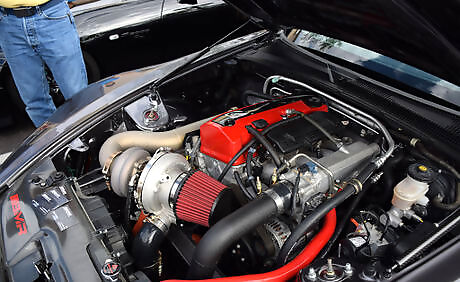
Bolt the downpipe to the exhaust side of the turbo.
Bolt the other end of the downpipe to the rest of the exhaust.
Mount the boost controller in a secure place. Follow the instructions provided for routing the vacuum lines.
Lower your vehicle.
Re-install the front bumper cover.
Remove the stock injectors and install the larger injectors if needed.
Remove the stock fuel pump and install the new one if necessary.
Double check to make sure everything is tightened and installed correctly.
Fill the engine with oil.
Go inside the vehicle.
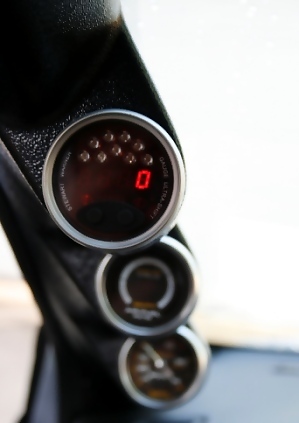
Follow the instructions provided with the gauges for install, if you did indeed purchase the gauges.
Install the programmable ECU per the instructions provided if a programmable ECU is necessary in order to tune your vehicle.
Re-connect the negative battery cable.
Find a local tuner and have them tune the car for your setup.


















Comments
0 comment